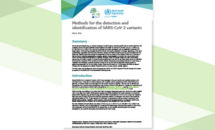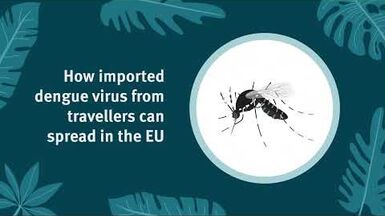Methods for the detection and characterisation of SARS-CoV-2 variants - second update
The objective of this document is to present the available methods for detection and characterisation of circulating SARS-CoV-2 variants. The document outlines quality assessment issues, as well as considerations relating to sample and method selection and results reporting based on the different testing objectives. It also provides advice to facilitate decision-making on the appropriate technologies to use and for which purpose.
Executive Summary
New in this update
- Information related to detection assays specific for Omicron variants BA.4 and BA.5 has been included.
- The chapter on rapid antigen detection tests (RADT) has been updated and includes available information on their performance for Omicron variants.
- The chapter on neutralisation assays has been updated with information on the isolation of SARS-CoV-2 BA.4/5 variants.
Summary
In the past year, several SARS-CoV-2 variants of concern (VOCs) have emerged and it is of key importance o monitor their circulation in all countries. Whole Genome Sequencing (WGS), or at least complete or partial spike (S)-gene sequencing, is the best method for characterising a specific variant. Alternative methods, such as diagnostic screening nucleic acid amplification technique (NAAT)-based assays, have been developed for early detection and pre-screening to allow prevalence calculation of VOCs, variants of interest (VOI) and variants under monitoring (VUM). Many of these methods can accurately identify the different variants, while others will require confirmation by sequencing of at least the complete or partial S-gene genomic region in a subset of samples.
Genomic monitoring should be integrated into the overall respiratory virus surveillance strategies. Specific objectives for the detection and identification of variants include assessment of the circulation of different SARS-CoV-2 variants in the community by selecting representative samples for sequencing, and genetic characterisation to monitor virus evolution and inform vaccine composition decisions or outbreak analyses. When NAAT-based assays are used, confirmatory sequencing of at least a subset of samples should be performed to use these assay results as indicators of community circulation of virus variants, particularly VOCs. Before introducing a new testing method or a new assay, a validation and verification exercise should be carried out to ensure that the laboratory testing system is reliably detecting the circulating viruses. Variant typing results should be reported to The European Surveillance System (TESSy) and SARS-CoV-2 consensus sequences should be deposited in the Global Initiative on Sharing All Influenza Data (GISAID) database, or other public databases. If available, related sequencing raw data should be deposited in the European Nucleotide Archive (ENA) and raw data, if available, in the European Nucleotide Archive (ENA). This should be done in a timely manner (ideally on a weekly basis).
This document was developed by technical experts from ECDC and the World Health Organization (WHO) European Region and previous versions have been reviewed by experts at WHO’s referral laboratories and in the SARS-CoV-2 Characterisation Working Group.
Download








